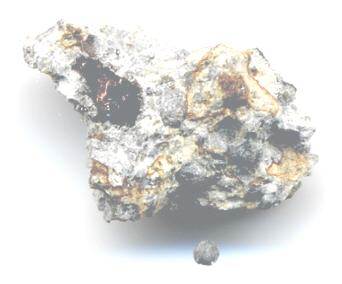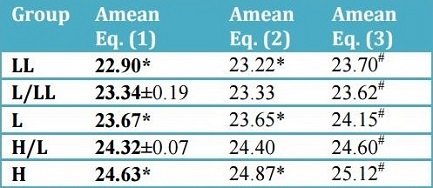L/LL4

Fell March 12, 1899
60° 20.42′ N., 25° 42.30′ E., approx. At 10:30 in the evening, a highly friable stone meteoriteWork in progress. A solid natural object reaching a planet’s surface from interplanetary space. Solid portion of a meteoroid that survives its fall to Earth, or some other body. Meteorites are classified as stony meteorites, iron meteorites, and stony-iron meteorites. These groups are further divided according to their mineralogy and Click on Term to Read More fell through thick sea-ice near the NW shore of Bjurbölemalmen Cape in southern Finland (Moilanen and Kettunen, 2016). The meteorite broke into many fragments lying beneath 8 m of mud and clay sediments, which delayed recovery of the first fragments for a month. Over 328 kg were ultimately recovered, and a laboratory analysis determined the classification for the meteorite to be an L4 ordinary chondriteWork in Progress Ordinary chondrites (OCs) are the largest meteorite clan, comprising approximately 87% of the global collection and 78% of all falls (Meteoritical Society database 2018)1. Meteorites & the Early Solar System: page 581 section 6.1 OC of type 5 or 6 with an apparent shock stage of S1, Click on Term to Read More. Further studies of Bjurböle have resulted in a revision of this classification, and it is now recognized as a member of the L/LL4 transitional group. The extrememly low crushing strength implies a crystallizationPhysical or chemical process or action that results in the formation of regularly-shaped, -sized, and -patterned solid forms known as crystals. Click on Term to Read More at low pressures and/or within a small parent bodyThe body from which a meteorite or meteoroid was derived prior to its ejection. Some parent bodies were destroyed early in the formation of our Solar System, while others like the asteroid 4-Vesta and Mars are still observable today. Click on Term to Read More.
Two types of
chondrulesRoughly spherical aggregate of coarse crystals formed from the rapid cooling and solidification of a melt at ~1400 ° C. Large numbers of chondrules are found in all chondrites except for the CI group of carbonaceous chondrites. Chondrules are typically 0.5-2 mm in diameter and are usually composed of olivine Click on Term to Read More have been identified in Bjurböle: 1) those composed primarily of quenched glass, and 2) those consisting of
olivineGroup of silicate minerals, (Mg,Fe)2SiO4, with the compositional endpoints of forsterite (Mg2SiO4) and fayalite (Fe2SiO4). Olivine is commonly found in all chondrites within both the matrix and chondrules, achondrites including most primitive achondrites and some evolved achondrites, in pallasites as large yellow-green crystals (brown when terrestrialized), in the silicate portion Click on Term to Read More and
pyroxeneA class of silicate (SiO3) minerals that form a solid solution between iron and magnesium and can contain up to 50% calcium. Pyroxenes are important rock forming minerals and critical to understanding igneous processes. For more detailed information, please read the Pyroxene Group article found in the Meteoritics & Classification category. Click on Term to Read More crystals along with a minor abundance of glass. While both
chondruleRoughly spherical aggregate of coarse crystals formed from the rapid cooling and solidification of a melt at ~1400 ° C. Large numbers of chondrules are found in all chondrites except for the CI group of carbonaceous chondrites. Chondrules are typically 0.5-2 mm in diameter and are usually composed of olivine Click on Term to Read More types are rimmed with FeNi-metal and FeS grains, the chondrules containing
silicateThe most abundant group of minerals in Earth's crust, the structure of silicates are dominated by the silica tetrahedron, SiO44-, with metal ions occurring between tetrahedra). The mesodesmic bonds of the silicon tetrahedron allow extensive polymerization and silicates are classified according to the amount of linking that occurs between the crystals also show a ubiquitous distribution of these opaque phases as fine grains (Rushmer
et al., 2013).
Previous parameters used to delimit the L/LL group from the L and LL groups include the
fayalitePure* iron end-member (Fe2SiO4) of the olivine solid solution series and an important mineral in meteorites. When iron (Fe) is completely substituted by magnesium, it yields the the pure Mg-olivine end-member, forsterite (Mg2SiO4). The various Fe and Mg substitutions between these two end-members are described based on their forsteritic (Fo) Click on Term to Read More molar percentage and the content of cobalt in
kamaciteMore common than taenite, both taenite and kamacite are Ni-Fe alloys found in iron meteorites. Kamacite, α-(Fe,Ni), contains 4-7.5 wt% Ni, and forms large body-centered cubic crystals that appear like broad bands or beam-like structures on the etched surface of a meteorite; its name is derived from the Greek word Click on Term to Read More. New studies utilizing cluster anaysis statistics on the minor and trace
elementSubstance composed of atoms, each of which has the same atomic number (Z) and chemical properties. The chemical properties of an element are determined by the arrangement of the electrons in the various shells (specified by their quantum number) that surround the nucleus. In a neutral atom, the number of Click on Term to Read More data conclude that the L/LL meteorites are chemically more closely related to each other than they are to either the L or LL group. Furthermore, the enriched
REEOften abbreviated as “REE”, these 16 elements include (preceded by their atomic numbers): 21 scandium (Sc), 39 Yttrium (Y) and the 14 elements that comprise the lanthanides excluding 61 Promethium, an extremely rare and radioactive element. These elements show closely related geochemical behaviors associated with their filled 4f atomic orbital. Click on Term to Read More concentration and negative europium anomaly that are found only in the L/LL meteorites easily distinguishes them from the other groups; the evidence is now stronger for the existence of a separate L/LL, low total-Fe, chondritic parent body.
It was demonstrated by Szurgot (2016) that the mean
atomic weightMass of a neutral atom of a nuclide - also called "atomic weight." The atomic weight of an element is the weighted average of each isotope. Click on Term to Read More (
Amean) of meteorites can be used to resolve the OC groups, including the intermediate groups L/LL and H/L.
Amean values can also be predicted through various equations based on other parameters such as atomic
Fe/Si ratio and grain
densityMass of an object divided by its volume. Density is a characteristic property of a substance (rock vs. ice, e.g.). Some substances (like gases) are easily compressible and have different densities depending on how much pressure is exerted upon them. The Sun is composed of compressible gases and is much Click on Term to Read More, and these
Amean values, as well as the magnetic susceptibility values derived from X-ray
fluorescenceEmission of electromagnetic radiation, especially of light, that results from bombardment of a substance with other forms of electromagnetic radiation. This spontaneously emitted radiation ceases immediately after excitation ceases. Click on Term to Read More (XRF) scanning, all consistently resolve these groups into the ordered sequence LL < L/LL < L < H/L < H. Bjurböle has
Amean values of 23.52 (chemical composition), 23.33 (
Fe/Si atomic ratio), and 23.47 (grain density). Furthermore, it was demonstrated that
Amean values are lower for unequilibrated type 3 samples than for equilibrated samples within each OC group due to the presence of water;
Amean values for petrologic types 4–6 are indistinguishable within each group.

Diagram credit: M. Szurgot, 47th LPSC,
#2180 (2016)
Amean based on chemical composition (Eq. 1),
Fe/Si atomic ratio (Eq. 2), and grain density (Eq. 3) Other members of this intermediate
chondriteChondrites are the most common meteorites accounting for ~84% of falls. Chondrites are comprised mostly of Fe- and Mg-bearing silicate minerals (found in both chondrules and fine grained matrix), reduced Fe/Ni metal (found in various states like large blebs, small grains and/or even chondrule rims), and various refractory inclusions (such Click on Term to Read More group include L/LL3 Esperance, L/LL4 Seemore Downs 001 and Cynthiana, L/LL5/6 Sahara 97021, L/LL6 Acfer 041, and several others. A few meteorites are only partially resolved into this intermediate group, including L/LL3 Inman, L/LL5 Knyahinya and Qidong, and L/LL6 Holbrook and Sultanpur. The specimen of Bjurböle shown above is a 0.2 g micromount with a small detached chondrule.








